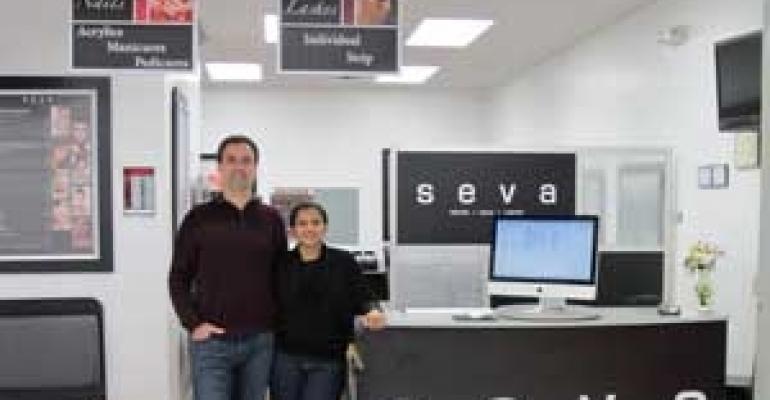Expanding through a store-within-a-store model has become a popular strategy for a number of growing retailers over the past few years. Chains as disparate as Mango, Apple and Sunglass Hut have found the idea appealing, knowing they can capitalize on built-in foot traffic while drastically reducing build-out costs. Most of the time, companies use the store-within-a-store concept to introduce their brands to new shoppers before investing in stand-alone locations or as a complement to existing stand-alone fleets. But some are finding the arrangement so appealing they plan to use it as their main growth vehicle.
One such chain is Seva, a salon concept that specializes in providing eyebrow threading, facials, waxing and nail services. Launched in 2008, the chain now operates 21 locations in eight states, most of them either inside Walmart stores or at airport terminals. While many retailers’ goal would be to eventually start leasing in-line space at malls and shopping centers, Seva executives say they prefer store-within-a-store partnerships and would like to expand their reach to new retailers, in addition to Walmart.

For Seva, being located inside bigger retail venues such as Walmarts provides built-in shopper traffic that tends to be heavily skewed toward its core demographic of women between the ages of 20 and 45. And customers love being able to take care of their beauty needs while out running errands, says Vas Maniatis, founder of the chain.
“It wasn’t so much that we envisioned Seva being a store within a store,” Maniatis says. “We wanted to really focus on convenience and a one-stop shopping experience and we also wanted to disseminate the practice of eyebrow threading. That technique wasn’t widely known in the U.S. and it just became clear that being inside Walmart would be ideal for us.”
Making new friends
Having the partnership with Walmart alone, however, limits Seva’s expansion potential because the opening of new locations depends on whether Walmart has appropriate spaces available for lease. The way the arrangement works is that Walmart presents Seva’s executives with a list of available locations and Seva then offers those sites to prospective franchisees, who usually prefer operating salons near their homes. The franchisee pays Walmart a $10,000 entry fee and signs a sub-lease agreement with Seva, which then pays Walmart a small percentage of the revenue produced by the salon.
Going forward, Seva would still like to keep Walmart as the key part of its expansion program. But it would also like to create strategic partnerships with new retailers, increasing the number of potential new sites. In Maniatis’ view, Seva would work well inside cosmetics stores such as Sephora and Ulta, inside drugstores and inside department stores—for example, JC Penney. The chain is currently in negotiations with a number of retailers and Maniatis hopes that by the end of the year, he can double Seva’s fleet.
“Our growth model right now is to focus on internally building out the Walmart infrastructure,” potentially opening up to 750 locations nationwide in the long-term, he says. “And we would take that strategy with other retailers we’d partner with.”
Seva salons average about 500 sq. ft. in size. A typical salon costs about $100,000 to open and Seva will soon launch a financing division that will provide franchisees with loans to pay for a portion of the opening costs.

